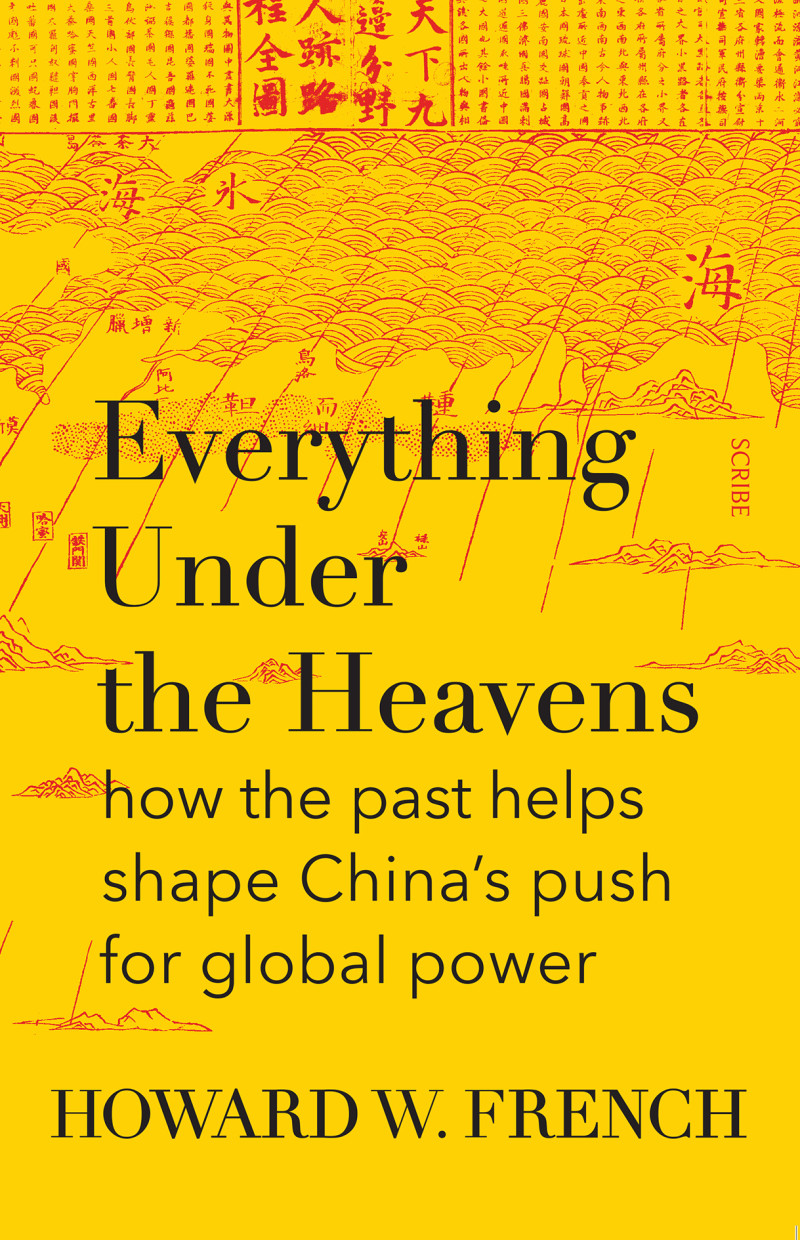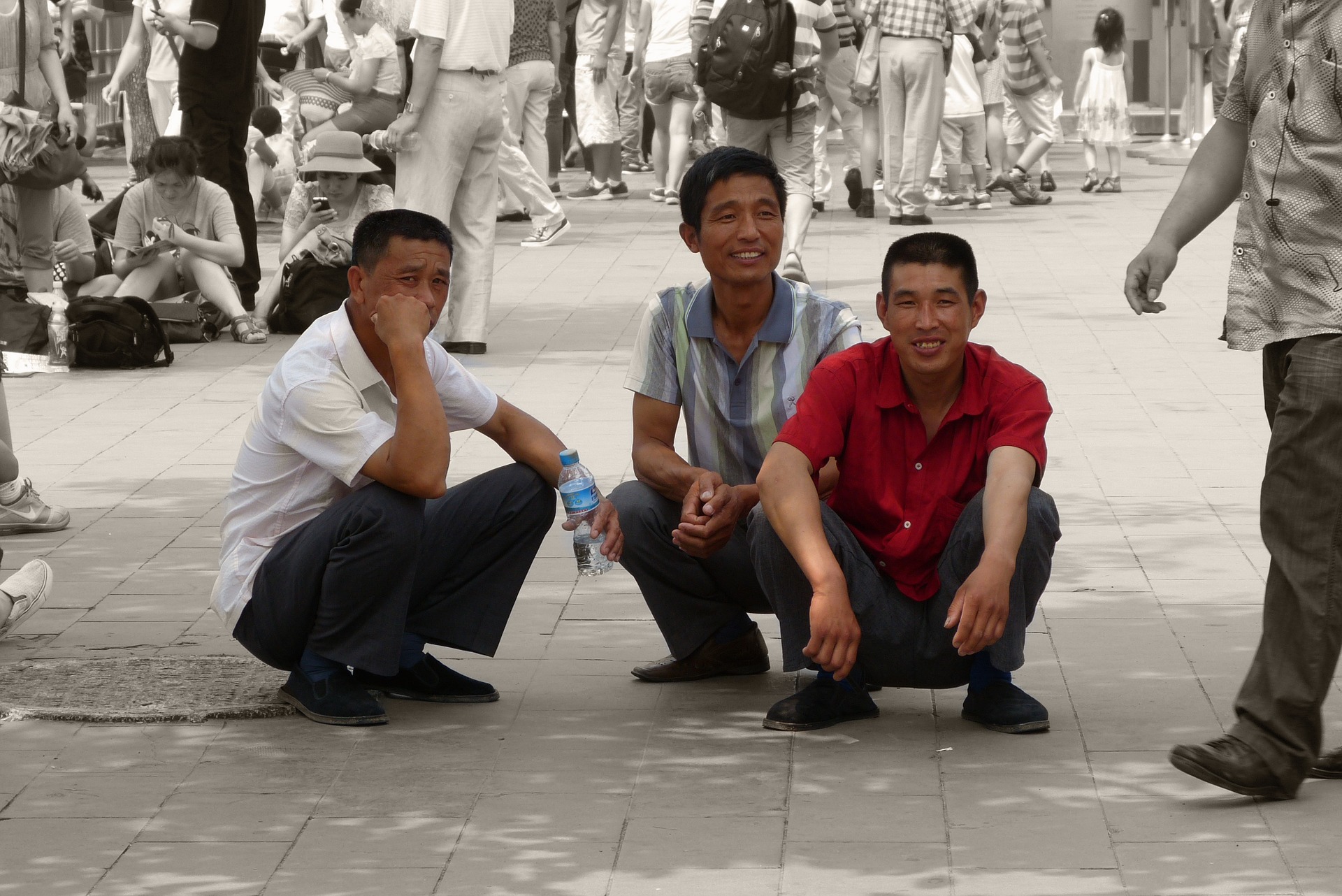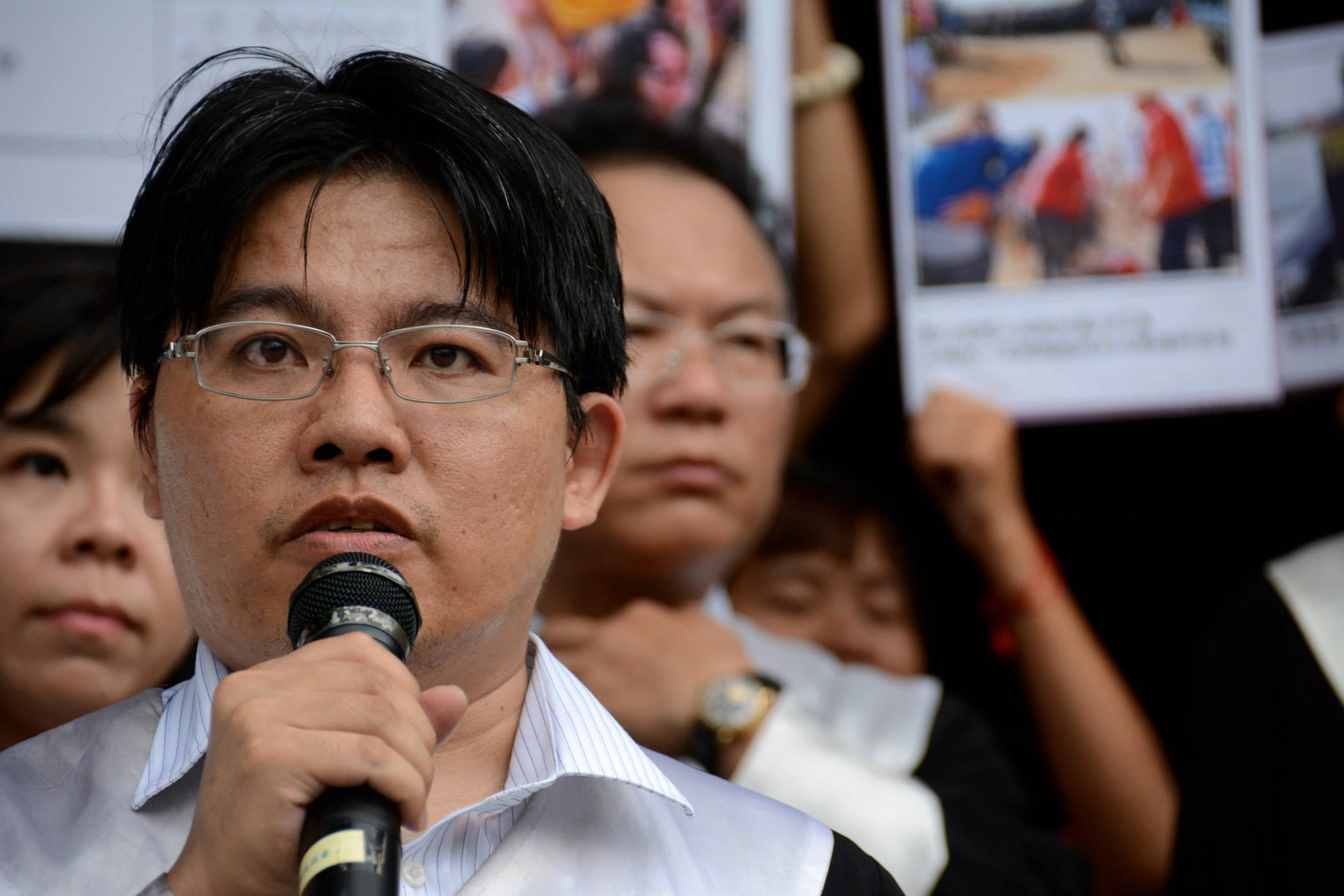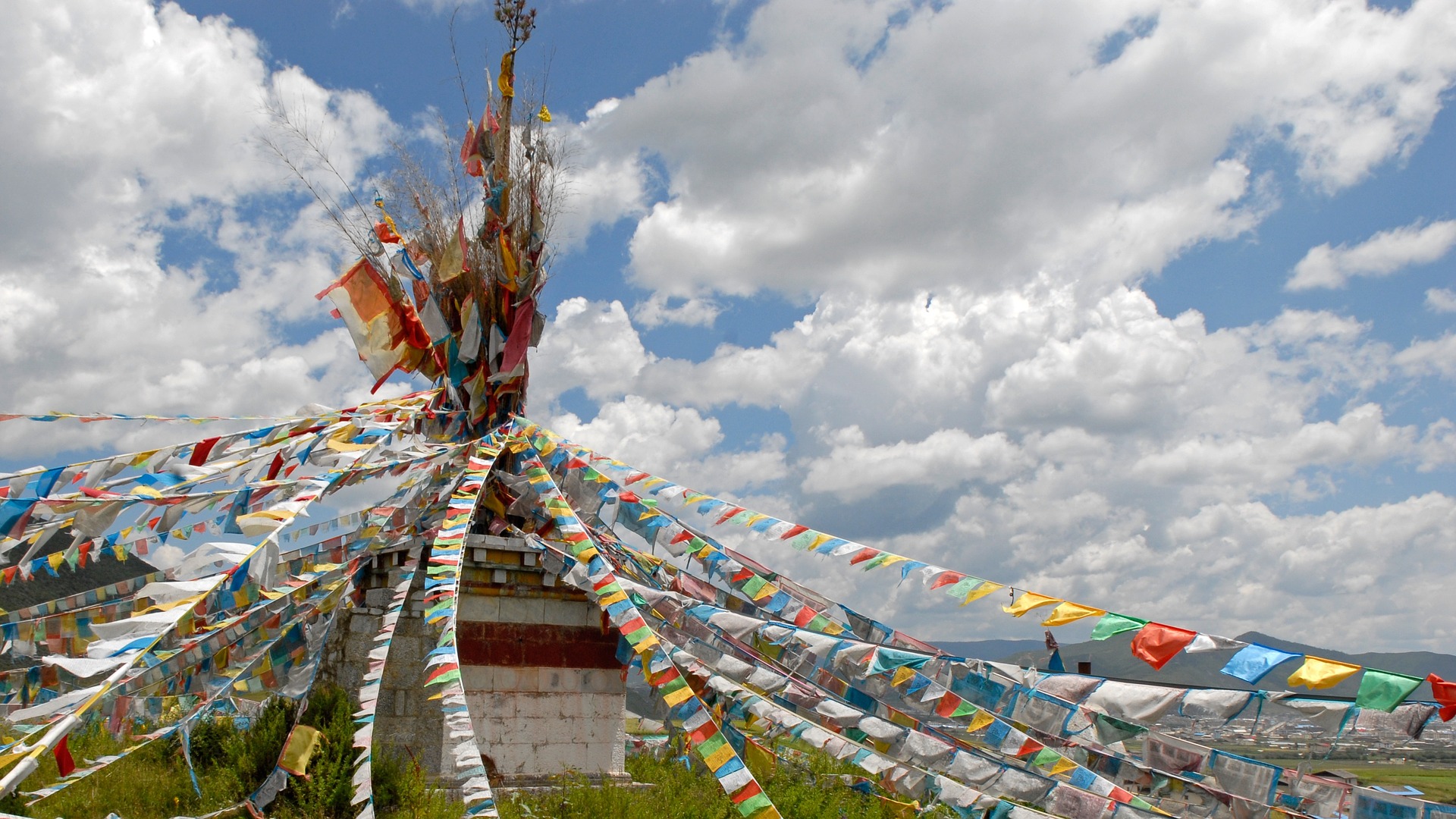China is increasingly relying on military force to back up its territorial claims and growing sphere of influence. Just like in the good old days, argues author Howard French, who uses history to make sense of Chinese foreign policy.
The most interesting part of former New York Times Asia correspondent Howard French’s new book is the last couple of pages. “The changing dynamics of the Chinese population more than anything else explain Beijing’s apparent haste,” he writes, in a bid to explain the rush with which China in the past few years has been trying to expand its territory and global influence.
That’s because China is doomed to grow old before it grows rich. Its demographics are a disaster, and the economy will follow suit. After decades of one-child policy, China is set to have one of the highest median-age populations in the world by 2050, and one of the lowest rates of people of working age.
Even Chinese demographers say it will be impossible for China’s economy to ever overtake that of the U.S., whose population is expected to grow by 30 percent to 2050. By then there will be two Chinese for every American, rather than the 4-to-1 ratio that exists today. And thanks to immigration — ironically partly from China — the U.S. will have a larger workforce proportion than the greying Chinese society of tomorrow.
 As China’s economy falters, its army will also have to spend more to keep up with global capabilities. The closer a military gets to state-of-the-art technology, the more expensive it will get to develop new weapons. Therefore, says French, president Xi Jinping has decided that “China must seize whatever advantages it can now before its window of opportunity slams shut within the next ten or, at best, twenty years.”
As China’s economy falters, its army will also have to spend more to keep up with global capabilities. The closer a military gets to state-of-the-art technology, the more expensive it will get to develop new weapons. Therefore, says French, president Xi Jinping has decided that “China must seize whatever advantages it can now before its window of opportunity slams shut within the next ten or, at best, twenty years.”
But for anyone who doesn’t read books backwards, the title of French’s latest book, All Under the Heaven: How the Past Helps Shape China’s Push for Global Power, is spot on, as the contents of the six chapters that precede the above conclusion make clear. Demographic predictions aside, facts on the ground show a rising China, and no one really knows what kind of superpower it intends to be. History, French argues, offers the best foundation to anticipate China’s motivations and predict its behavior when shaping a new world order.
Chinese values, language, philosophy and religion were regional if not universal standards for hundreds if not thousands of years. Imperial China — perhaps wisely — didn’t make a habit of occupying large areas for cheap labor and natural resources. It seemed happy just to incorporate smaller states into a tribute system of which the emperor was the center of the world. By acknowledging the supremacy of the dragon throne, rulers afar earned political legitimacy and even trade benefits from the vast Chinese empire.
A history of imperialism
This track record is encouraging Premier Li Keqiang, as well as other high officials, to state that “expansionism is not in the Chinese DNA.” At Yale University, French witnessed a young Chinese scholar brushing aside the worries of Chinese ulterior motives in Africa (the subject of French’s previous book) by saying that “China has already proven, since the time of Zheng He, that we are a friendly country that does not seek hegemony over others.” The peaceful voyages of Ming dynasty explorer Zheng He in the early 15th century, sailing his huge armadas to the peripheries of the known world, are often used to prove the point that China is morally superior by nature.
Of course, none of this is true. “To the contrary, nearly the entire perimeter of present-day China was incorporated via tactics of imperial conquest and subsequent colonialism,” French writes. One could ask the Vietnamese, who over the past 1,000 years had to defeat attempts by China to assert influence by force no less than seven times. In the early 1400s it was set upon by a massive invasion force of about a million Ming dynasty soldiers. Some 7 million Vietnamese are believed to have perished during the war and the 21-year annexation that followed. Schools were only allowed to teach in Chinese as local customs were banned and men conscripted by force into the imperial army.
As for Zheng He, archeological as well as archival information shows that his ships were hardly any gift boats loaded with imperial treasures to strew upon whoever might inhabit the lands on the horizon. Rather, they were landing crafts carrying heavily armed soldiers. 200 of those could carry several thousand men, drilled to build fortified warehouses wherever they were told to disembark.
Zheng He’s huge armadas were nothing less than state-funded missions to extend Chinese power and boost its prestige.
The majority of rulers in the smaller kingdoms along South Asian and East African coastlines then decided it might not be such a bad idea to bow down to the emperor after all. For those who made another decision, death followed. During his very first major voyage, Zheng He killed at least 5,000 locals while attacking a Sumatran city. Hundreds more were killed in Java, and extorted compensation and submission with threat of more violence. In 1411, Zheng He invaded Sri Lanka to replace its “rude” king with a puppet leader.
Zheng He’s huge armadas were nothing less than state-funded missions to extend Chinese power and boost its prestige. During the Ming dynasty, maritime Southeast Asia became a sphere of Chinese influence as never before or ever after, as its coastal societies were forced into its tribute system. But in the late fifteenth century the imperial shipyards, capable of building 600 oceangoing ships a year, was dismantled. In 1535, an imperial edict ordered the outright destruction of the remaining ships and the arrest of crew members.
The decisions was most likely a result of Confucianists prevailing in a power struggle that may have changed the course of world history: we can only imagine what would have happened if European ships, often travelling by the handful, had encountered a much larger Chinese maritime force in the Strait of Malacca or even on the African coast. China instead turned inwards, and by the time the “barbarians” appeared, the Chinese empire could only send junks “less efficient than Roman galleys” to encounter steamships with iron hulls.
Backstabbing Japan
While Chinese power waned, its sense of being the rightful center of the world remained constant. Already, with the establishment of the Chinese republic in 1912, an urge to recover China’s lost prerogatives existed. Chiang Kai-shek soon became a driving force. He kept a diary, and over a period of 20 years starting in 1928, every single entry in that diary contained the word xuechi (雪恥) — “avenge humiliation” — in the top right corner. “Recover Korea. Recover the land that was part of the Han and Tang dynasty. Then, as descendants of the Yellow Emperor, we will have no shame,” reads one his entries from 1934.
Four years later, the Ministry of Internal Affairs published a so-called “Map of National Shame,” including Mongolia as well as parts of Siberia and all of Indochina continuing down to the Strait of Malacca. Similar ambitions, of course, were always well and alive under communist rule, which replaced Chiang’s Nationalist rule in 1949.
French uses Japan as an example to show the pragmatism, if we can call it that, with which China is realizing those aims. While China was poor and weak, it saved no time to sign a Treaty of Peace and Friendship with Japan in 1978 to attract investment and technology from its rich and war-guilt-plagued neighbor. The Japanese not only provided between 50 and 60 percent of China’s economic aid for decades, but also successfully lobbied so that the U.S. and other countries would ease the isolation of and the sanctions imposed on China after the Tiananmen Massacre in 1989. But once China was on its feet, it used Japan as the foremost brick to unite the country by nationalism.
When president Jiang Zemin visited Japan in 1998, he repeatedly scolded his hosts for not “sufficiently discussing” the pain that World War II had inflicted on China. The bilateral communiqué from Jiang’s visit went unsigned, and French writes: “The nationalist bent politics in the early 2000s was in some measure a predictable response to the constant needling over war guilt from from Chinese leaders like Jiang Zemin.”
Relations between the two countries gradually went astray, and under Xi China’s anti-Japanese propaganda has reached new heights. In 2014, a prominent Chinese foreign policy thinker told French that since Xi assumed power, one can “feel the hatred” during meetings, as everything is about “punishing Japan, punishing this damned [Shinzo] Abe.” And China can afford to be cocky now. In 2000, the Japanese defence budget was 63 percent larger than China’s. Now China’s is three times as big as Japan’s.
Ignoring international law
Just like the peaceful history narrative Beijing is trying to create, its legal claims to surrounding seas doesn’t hold water. The idea that the South China Sea is “traditional waters” of China is not only irrelevant by international laws and conventions; it is also false. During the first millennium A.D., those waters were primarily used by vessels under Malay, South Asian or Arab flags. The first recorded Chinese participation in maritime trade dates back to the eleventh century. No archeological evidence has been found of any seagoing Chinese vessels even in Chinese waters before the thirteenth century, let alone in South Asian waters.
As a weak maritime power, China in fact embraced the United Nations Convention on the Law of the Sea (UNCLOS) as it was being developed during the 1980s. At the same time, China was surveying sea features as far away as James Shoal, a small bank some 1,500 kilometers from China but only 100 kilometers off the coast of Malaysia which Beijing nevertheless declared in 1983 as the “southernmost point of Chinese territory.”
When seizing several rocks, reefs or features in the South China Sea starting from the mid-1980s, the tactics of Zheng He once again became praxis. Failure to submit resulted in bullying, or worse. This was the case in a 1988 turkey shoot at Union Banks in the Spratly Islands between the Philippine and Vietnamese coast, where 64 flag-waving Vietnamese soldiers were killed by the Chinese.

When seizing several rocks, reefs or features in the South China Sea starting from the mid-1980s, the tactics of Zheng He once again became praxis. Failure to submit resulted in bullying, or worse.
UNCLOS was already signed by China when it became valid in 1994. But in May 2009, China presented it claims in the South China Sea by submitting a map with the so-called nine-dash line to the United Nations. Ignoring the international treaty it had just ratified, China’s claim on about 90 percent of the entire South China Sea drew protests from the Philippines, Vietnam and other countries. (Also, the nine-dash line was “invented” only in 1947, and hence cannot be said to be a marker of traditional waterways.)
In the past few years China has become strong, confident and impatient enough to speed up the realization of its claims. French describes China’s 2012 showdown with the Philippines over Scarborough Shoal as “the first sally in a broad and sustained push to claim maritime territory throughout the region.” China — which now ignores not only UNCLOS but also the Permanent Court of Arbitration in The Hague — has doubled down on its control over the shoal. French has visited Filipino fishermen who no longer dare to venture into waters that China “first made traditional use” of.
In summer of 2014 the region was rocked when the Chinese oil platform Haiyang Shiyou 981 entered Vietnamese waters under the protection of Chinese vessels. The following anti-Chinese riots in Vietnam showed what a deadly cocktail miscalculation and nationalistic sentiments can be. Just as had earlier been the case with Japan, China had just the year before agreed to joint development of undersea hydrocarbons together with Vietnam. But, as French writes: “Suddenly, with Xi Jinping at the helm in Beijing, though, China had changed its mind.”
The ultimate showdown
Two great powers have never coexisted peacefully in East Asia, or, as an old Chinese saying quoted by French has it: “When two emperors appear simultaneously, one must be destroyed.” History implies that China wants to oust the U.S. from the region. So do the facts. Within a few months in late 2014, Fiery Cross Reef in the Spratlys went from literary one rock one meter above sea level to a 3,300-meter-long airstrip with an adjacent deep water harbor and barracks for hundreds of Chinese soldiers.
The rapid Chinese militarization of the South China Sea is also evident in the Paracel Islands off the Vietnamese coast a bit further to the north. Radar facilities and anti-aircraft weapons are among the newest additions to those artificial islands. Indeed, the American think thank Center for Strategic and International Studies has already warned that the South China Sea is turning into a “Chinese lake.”
If Xi Jinping’s rapid expansionism is due to a limited “timeframe,” as French suggests, there is also a risk that Chinese actions will become more desperate. Hence, the immediate future might be the time were a large conflict between China and the U.S. is most likely. At the same time, French points out that China is too big to be contained, and that attempts to do so would be counterproductive. So what might be the best way to handle the beast?
As a country with demographic challenges, no allies and no soft power abroad besides calls for prosperity, French believes that China’s power is bound to diminish in the coming decades. In the meantime, the U.S. would do best to play facilitator and matchmaker to encourage new or enhanced relationships among China’s wary neighbors. This would “tie down the giant” and constrain it to a set of mutually acceptable international rules.
If Xi Jinping’s rapid expansionism is due to a limited “timeframe,” as French suggests, there is also a risk that Chinese actions will become more desperate. Hence, the immediate future might be the time were a large conflict between China and the U.S. is most likely.
Southeast Asian societies have historically never shown enthusiasm for banding together as a balance against China. But now, when international rules are in place, China “assists the United States in maintaining its current place in the world” by ignoring those rules. (Could anyone please tell Donald Trump?)
French admits that China must be met with resolute firmness when needed. But he also hopes that China can be drawn into the international system and for its voice to be heard on international security matters. If China is treated as an equal with “much to contribute to human betterment,” French anticipates it will mature as its power grows and become “a China we can live with.”
This might be a strategy that serves French’s native United States well. But such views are likely to disappoint readers with a Taiwanese perspective. The same goes for the book in general. While China’s historical relations with Japan and Vietnam are examined carefully — and brilliantly — centuries and millenniums back in time, Taiwan is barely mentioned other than as a Japanese colony. There is no effort to explain even the basics behind the fact that Taiwan is the country in the most immediate crosshair of China’s expansionism.
And since he portrays China’s expansionism as a race against time, French, if he investigated the matter himself, would most likely find a negligible interest among the Taiwanese populace to “make room for Beijing here and there.” Because for Taiwan, the situation is more acute than for the U.S. or even Japan, especially since China doesn’t hesitate to use its growing international influence to (often without protests from the global community) isolate or punish Taiwan for not voluntarily giving up its democracy and way of life to become part of “everything under the heavens.”
Book Details
Everything Under the Heavens: How the Past Helps Shape China’s Push for Global Power
Howard W. French
Knopf Doubleday Publishing Group (2017)
352 pages
You might also like
More from Book Reviews
Lawyer, Advocate, Activist: Chiu Hsien-chih’s Vision for Justice in Taiwan
In his book ‘Stand By You,’ human rights lawyer Chiu Hsien-chih examines major human rights cases, problems with Taiwan’s legal …
New Book of Tibetan Short Stories Challenges China Narrative
‘Old Demons, New Deities’ will resonate in Taiwan, a country that, like Tibet, is torn between the competing realities of …









